
In this course, we will learn to create and add a Power BI dashboard in Dynamics 365 CRM. You will be able to create a new Power BI dashboard and deploy it in your Dynamics 365 CRM’s dashboard area.

What is Power BI?
Microsoft’s Power BI is an interactive business intelligence platform that provides no-code business users with tools for analyzing, aggregating, sharing data and visualizing the data. Power BI’s user interface is more eye catching and easy digesting for users which are used to with Excel and other Microsoft products. This makes Power BI a very versatile self-service application / tool.
Why you need Power BI Dashboard in Dynamics CRM?
Dynamics 365 CRM already has a built-in dashboard capability with full interactive charts, lists etc. In CRM, by default the Dashboards page will be the first thing to get populated as soon as you open the CRM. But the Dynamics dashboard are not as interactive and data dense as the Power BI dashboard. But there is no need to worry about, you can easily embed Power BI dashboard in the Dynamics 365 dashboard area without any major hassle.

Integrate Power BI Dashboard in Dynamics CRM
Follow the below steps for integrating Power BI dashboard in Dynamics 365 CRM.
- Get the Power BI Account
- Click here to create your own Power BI account.
- Click on Start Free if you do not have any Power BI license.
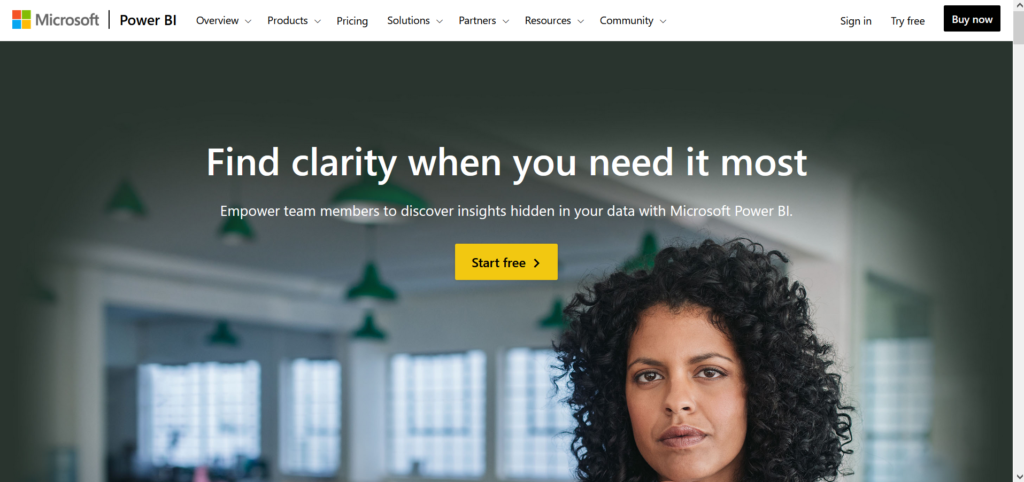
- Create you own Power BI account by entering the essential details. Once your Account is created, it will look like the below shown image.
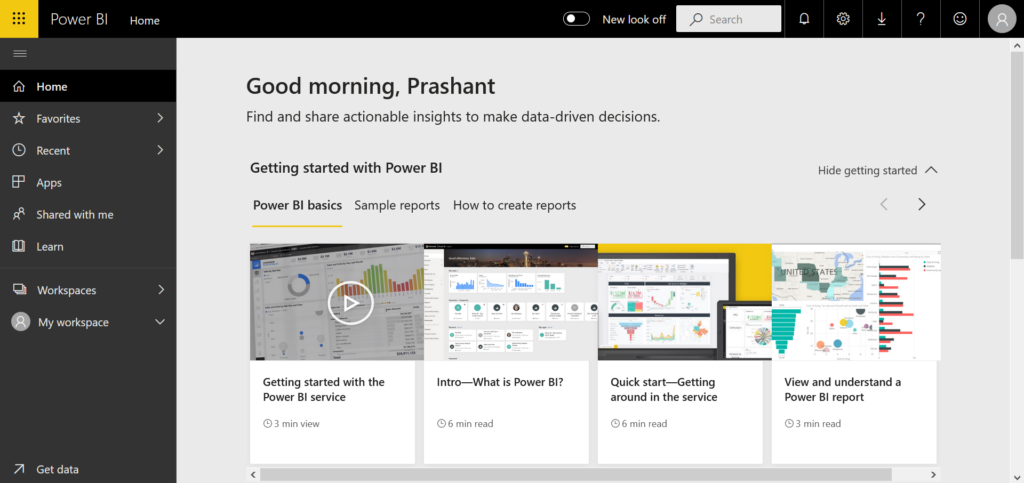
2. Integrate the Connector App
- Navigate to the bottom left corner of the screen and click on button “Get Data”.
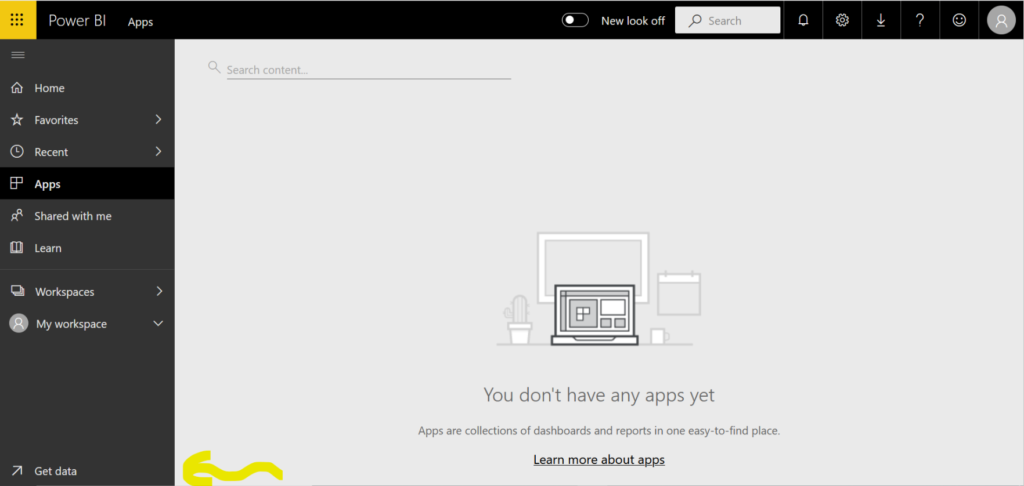
- Under tab “Services”, click on Get.
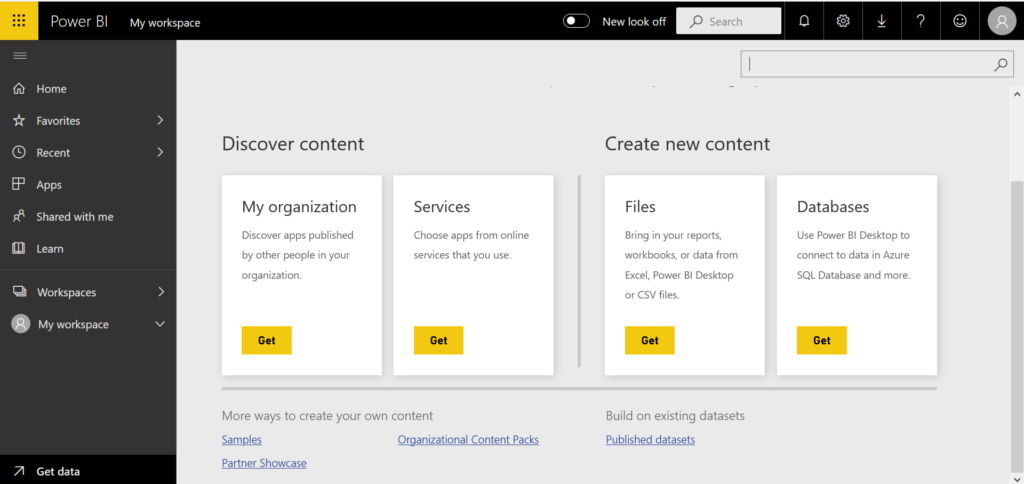
- This will populate the Microsoft’s App Source, now in the search box type “Sales Analytics for Dynamics 365” and click on result and get it now.
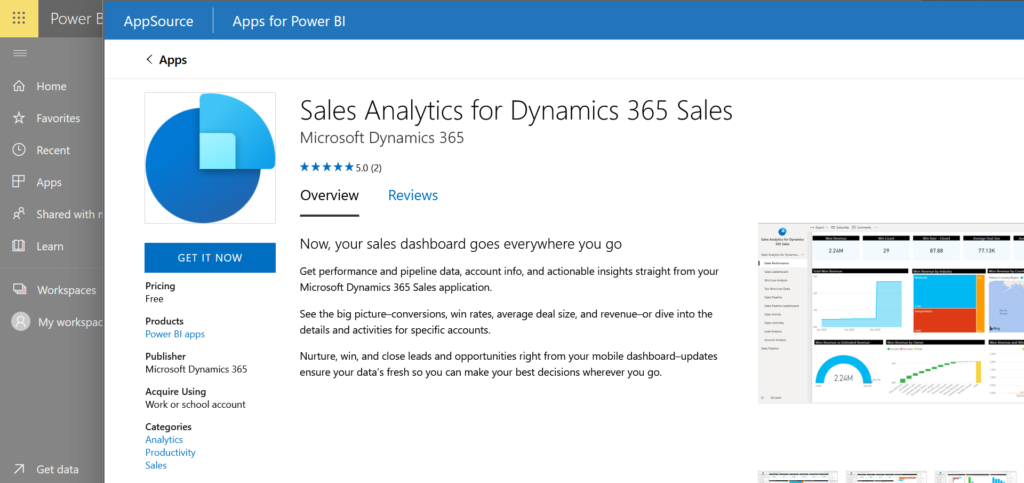
- Click on Connect your Data, enter your organization URL and click on Next.
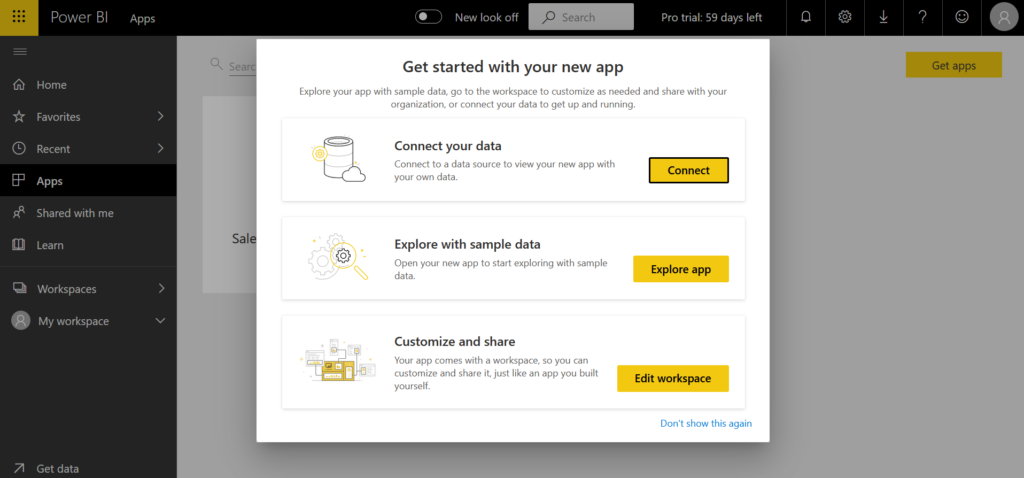
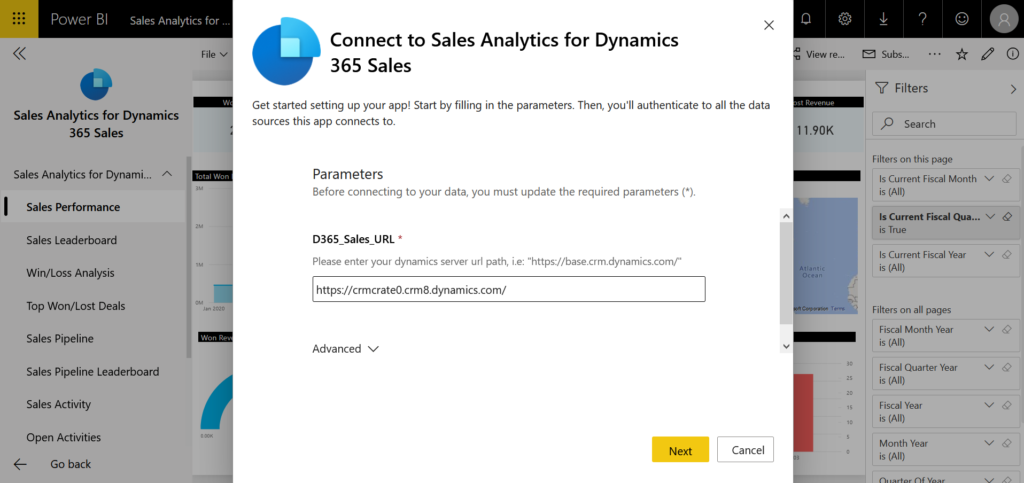
- Now in the authentication type, select “OAuth2” and click on sign-in by entering your organization’s credentials. Once your connection between Power BI Analytics and D365 is established, the Power BI Dashboard will populate the analytical data from your Dynamics 365 CRM as shown below.
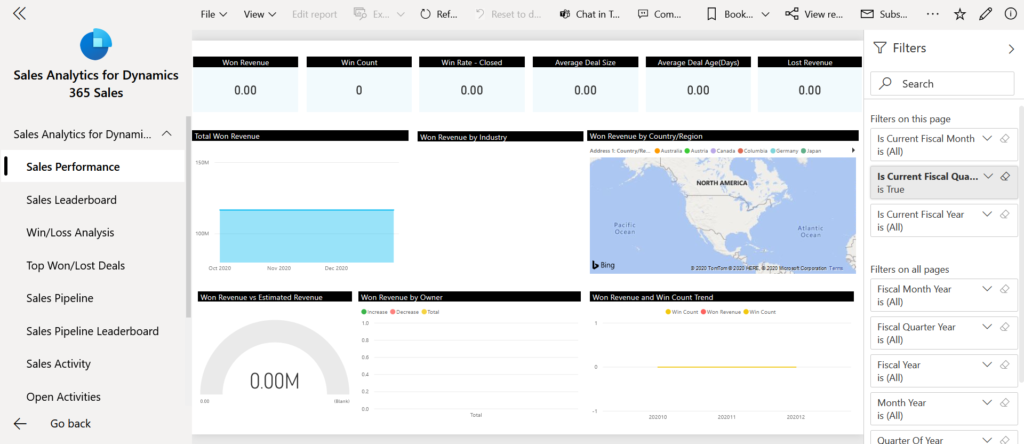
3. Embed the Power BI report in Dynamics 365 CRM
In the above steps, we have created the Power BI analytical report. Now its time to embed it in our Microsoft Dynamics 365 CRM.
- Open your Dynamics 365 >> navigate to settings >> Administration >> System Settings.
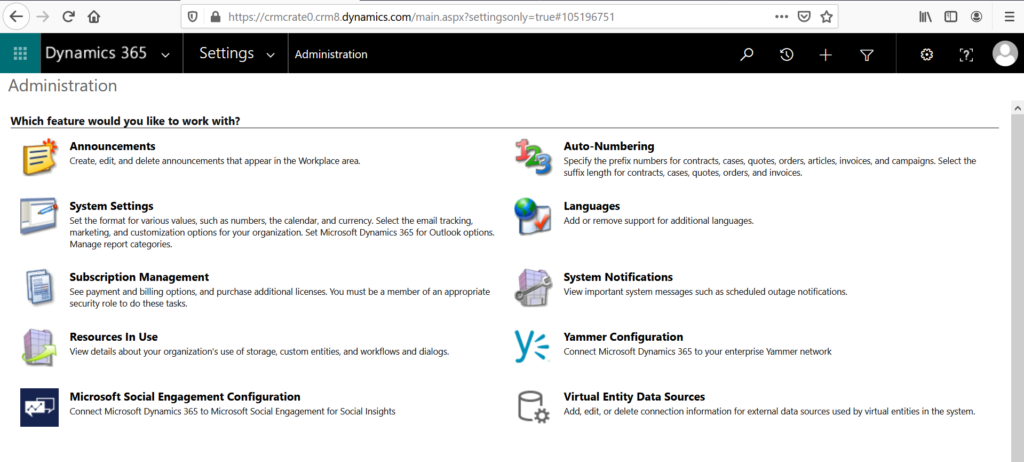
- In system settings, navigate to the Reporting tab and click on checkbox “Allow Power BI visualization embedding” as shown in the below image. Once done, click on Ok.
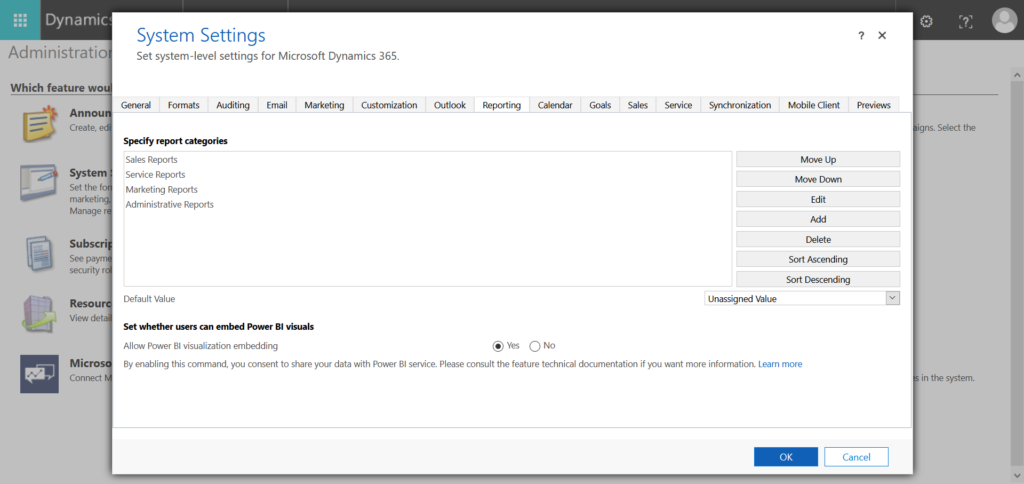
- Navigate back to the dashboard page of your Dynamics CRM. In the ribbon bar, click on New >> Power BI Dashboard
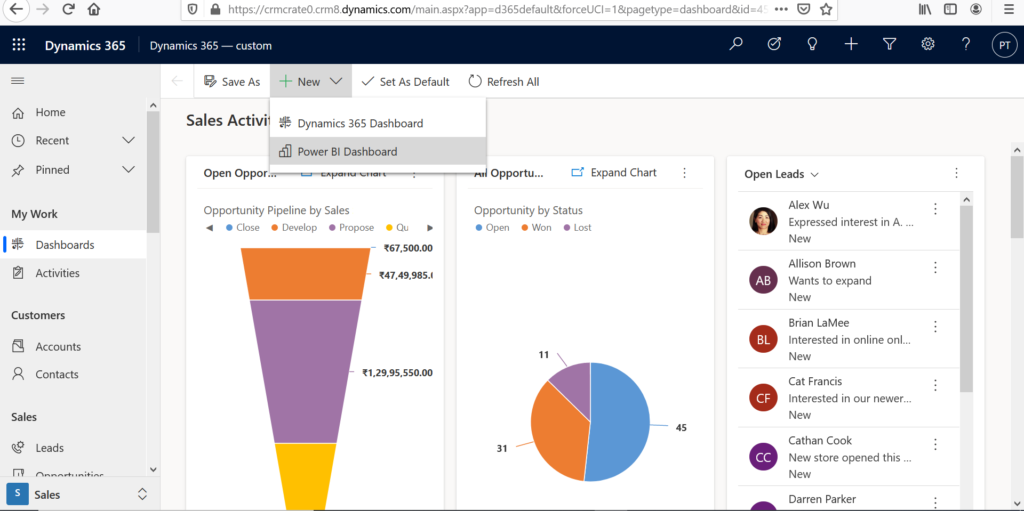
- In the workspace, select the Sales Analytics for Dynamics 365 Sales and click on the checkbox “Enable for Unified Client”. Click on Save once you are done.
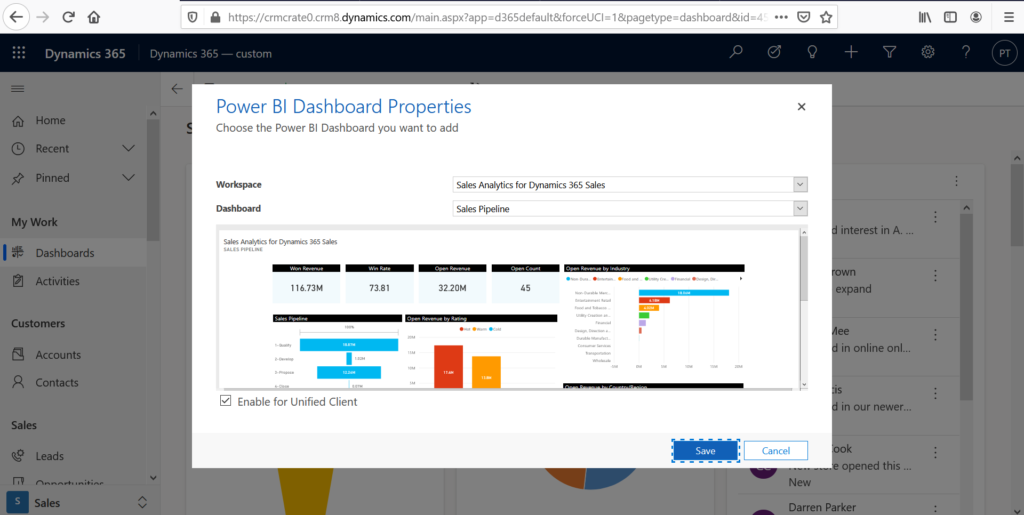
Now your Microsoft Dynamics 365 CRM dashboard will populate the Power BI report as shown below.
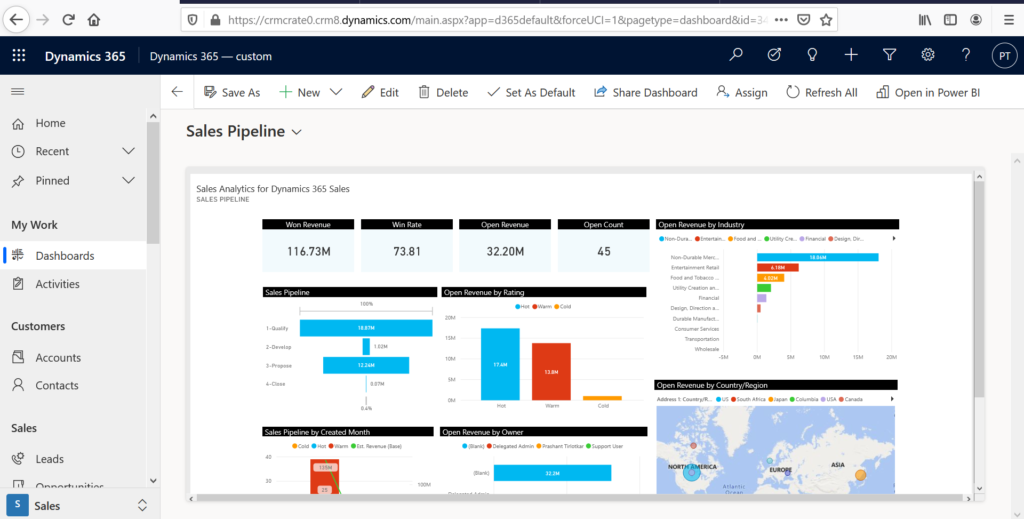
Conclusion
Thus we learned to created a Power BI report, connect it with Dynamics and embed the created Power BI report with Dynamics 365.
CRM Crate
All In One Platform For Learning Microsoft CRM.



